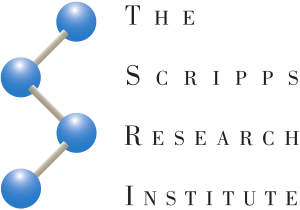NEWS
Dive deeper into the world of compounds and reagents in our news and blog posts.
October 8, 2025
September 30, 2025
April 14, 2025
September 18, 2024
September 13, 2024
August 14, 2023
Zirconocene chloride hydride (Schwartz’s reagent, Figure 1) is an organozirconium compound used in a wide range of organic reactions.Schwartz’s reagent was first prepared by Wailes and Weigold (https://...
June 14, 2023
2,4,6-trichlorobenzoyl chloride (TCBCl), also known as Yamaguchi reagent (Figure 1) is a reagent that is employed in an esterification process devised by Masaru Yamaguchi et al. in 1979 and is also effective ...
April 20, 2023
μ-Chloro[di(cyclopenta-2,4-dien-1-yl)]dimethyl(μ-methylene)titaniumaluminum (Tebbe reagent, Figure 1) is an organometallic reagent used to methylenation of carbonyl compounds. The main advantage of the Tebbe reagent over the ...
March 22, 2023
Dimethyl(1-diazomethyl)phosphonate (Seyferth–Gilbert reagent, Figure 1) is a homologation reagent used to convert aryl ketones and some aldehydes into alkynes elongated by one carbon atom coming from the reagent ...
February 16, 2023
The Corey-Bakshi-Shibata (CBS) catalyst is an organocatalyst that is used in asymmetric ketone reductions (Corey-Itsuno reduction). The structure of the CBS oxazaborolidine catalyst is shown in Figure 1.CBS oxazaborolidine can ...
January 11, 2023
Protein synthesis is a critical biological process that is divided into two parts. A segment of DNA encoding a specific protein (a gene) is copied to a molecule of messenger ...
January 2, 2023
Many synthetic applications use acidic catalysis, but having an extra compound in solution to serve as a catalyst, such as TsOH or CSA (para-toluenesulfonic acid or camphor-10-sulfonic acid), can ...
November 30, 2022
Trifluormehylation is an effective technique to increase drug candidate solubility and lipophilicity, and so strategies for adding the CF3 group are being investigated. The Langlois reagent (sodium trifluormethylsulfinate) is a ...
November 22, 2022
The selectivity of therapeutic drugs to cancer cells over healthy tissue is one of the most challenging difficulties in cancer treatment. The employment of sophisticated drug delivery systems is a ...
October 13, 2022
Reagents derived from p-quinone such as 2,3-dichloro-5,6-dicyanobenzoquinone (DDQ) or p-chloranil are used in a wide range of applications in organic synthesis as quantitative oxidants, however, numerous quinone catalysed transformations ...
September 26, 2022
State-of-the-art laboratory equipment and analytical instruments are an essential part of Santiago lab. And since many clients often ask us about this topic, we decided to write a small article ...
August 15, 2022
In the last years, and especially during the SARS-Co-2 pandemic, giant efforts were devoted to designing, synthesising and studying antiviral agents. On the other hand, too little consideration was given ...
June 27, 2022
A contract research organization (CRO) is a company that provides its solutions and expertise to other companies ranging from pharmaceutical, biotechnology or medical industry. In this case, research services ...
May 9, 2022
Nucleoside analogues are the largest class of antiviral agents based on small molecules. Nowadays, they are the cornerstone of chemotherapy for several viral chronic infections, including infections by HIV, hepatitis ...
April 19, 2022
Many biologically active substances contain a sulphur atom; however, it is usually not so easy to introduce sulphur into the molecule. Therefore, several thionation reagents were developed in the past. ...
April 5, 2022
When a thousand people worldwide suffered from lethal coronavirus (COVID-19) in 2020, we came up with an ambitious project to contribute to the worldwide pandemic solution.Everything started with the question: ...
March 15, 2022
Custom synthesis can be beneficial in many ways. These days many researchers from various fields require specialised chemical reagents– starting building blocks, reagents or active compounds. However, not every ...
March 7, 2022
Amide bond formation is one the most widely occurring reactions in organic chemistry as well as in drug development. There are numerous ways to synthesize amides. However, their general principle ...
February 23, 2022
Paxlovid is a new potential drug for COVID-19 invented by Pfizer. Paxlovid is composed of two active ingredients, Nirmatrelvir and Ritonavir. Similarly, a mixture of Lopinavir and Ritonavir drugs is ...
February 3, 2022
Viruses are causing many troubles in our lives these days. They cause many serious diseases (some of them even deadly) such as cold, influenza, EBOLA, AIDS or COVID-19.At Santiago ...
January 19, 2022
Version in Czech is bellow the English version/ Verze v češtině se nachází pod anglickým textemMany unique and interesting organic compounds were developed and synthesised by Czech ...
January 14, 2022
At Santiago, we have broad experience with the scale-up of various processes. One of the projects we have been working on was purifying 350 kg of crude oil with an active ...
December 13, 2021
Viruses are pathogens occurring all around us that can be fought with antiviral drugs. Viruses are the cause of a large number of diseases, many of which are deadly – from ...
December 6, 2021
Over the last few decades, several approaches have been developed to synthesise short DNA sequences.Relevant approaches include the phosphodiester method and the H-phosphonate method. However, higher yields and higher ...
November 26, 2021
[vc_row][vc_column][vc_column_text] AIDS is a terminal disease caused by the human immunodeficiency virus (HIV), affecting millions worldwide.HIV belongs to the group of retroviruses, which ...
November 19, 2021
[vc_row][vc_column][vc_column_text] Molnupiravir is a new potential drug against the SARS-CoV-2 infectious virus. To this date, all medications against SARS-CoV-2 are administered only by infusion ...
November 3, 2021
Base-modified DNA could potentially find widespread application in medicinal chemistry and therapy, as well as in material science.[1] Examples of applications of base-modified oligonucleotides include aptamers for therapy[2], as scorpion ...
October 18, 2021
At SigutLabs, we are working on various exciting projects for many international clients. Depending on the project’s complexity, existing literature precedents, and other factors, we typically utilize either a ...
October 11, 2021
During the course of the last decades, outstanding efforts were devoted to design and develop nucleotide prodrugs to be employed as potential therapeutic agents, especially for the treatment of human ...
October 8, 2021
The discovery of the first antibiotic, penicillin (Figure 1), by Alexander Fleming in 1928 was a major breakthrough in the treatment of various, until that time fatal, infections. Figure 1. Penicillin core structure ...

Partners & distributors

















